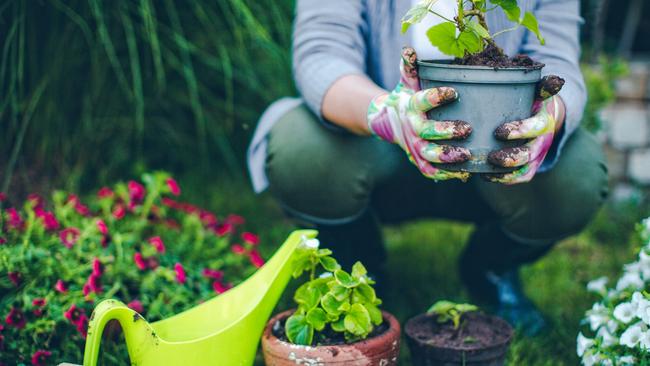Shock Australian legionnaires outbreak prompts warning for gardeners using potting mix
Health experts have warned Aussie gardeners to take steps to protect themselves from this potentially fatal bacteria. See what you can do.
National
Don't miss out on the headlines from National. Followed categories will be added to My News.
A large spike in the number of legionnaires’ disease cases in Australia has prompted a warning from health experts for gardeners to ensure they are wearing protective gear when handling potting mix and compost.
In the year to October 16 there have been 660 notifications of the potentially fatal disease, also known as legionellosis, with the bulk of cases occurring in NSW and Queensland.
This is an increase of more than 200 on the five-year annual average of 457 cases, according to reporting from the National Notifiable Diseases Surveillance System (NNDSS).
NSW Health issued a warning over the weekend following the death of a Sydney woman aged in her 60s from the disease. She had reportedly been using potting mix prior to becoming ill.
Legionella longbeachae bacteria is often found in potting mix and can cause the lung infection legionnaires’ disease if dust from contaminated soil is inhaled. It leads to a rare form of pneumonia that can be severe and even fatal.

NSW Health executive director, Dr Jeremy McAnulty, said gardeners could take simple precautions to ensure they were safe when gardening.
“Most people who breathe in the bacteria don’t become ill, but the risk of infection increases if you’re older, a smoker, or have a weakened immune system,” Dr McAnulty said.
“Wetting the potting mix first also helps prevent any contaminated potting mix dust blowing up into the air and being inhaled.
“Even if you’ve been wearing gloves, make sure to wash your hands thoroughly with soap before eating or drinking as the bacteria could still be there.”

Legionella longbeachae is one of the two most common forms of legionella bacteria found in Australia, the other being legionella pneumophila, a bacteria that can contaminate airconditioning cooling towers, decorative fountains, humidifiers, whirlpool spas, shower heads and other bodies of water.
This form of legionella bacteria is often linked to larger outbreaks of the virus.
Professor Bruce Thompson, head of the University of Melbourne’s School of Health Sciences, said it was difficult to find a single reason for the spike in case numbers in Australia, but that Covid lockdowns could have played a role.
“Everyone’s been locked down and doing more gardening perhaps, and perhaps airconditioning systems have not been checked as often as they should, so that potentially needs to be looked at,” he said.
“Your personal airconditioning system should also be checked and cleaned.”
Professor Thompson said plastic potting mix bags were the perfect environment for the bacteria to flourish, given the mix can be damp and will often heat up if it’s stored in a warm place or in the sun.
“When the bag is opened it just rains bacterial particles all over you that you breathe in, and if you breathe in enough of them, they get into your lungs which is a beautiful petri dish – it’s a really nice, warm, moist environment and a fantastic place to grow a bug,” he said.

“These are the things you are basically inhaling when you are gardening. You wear gloves for a reason, to avoid things like spiders, so it makes good sense to be wearing a properly fitted N95 mask to protect your lungs.”
People with compromised immune systems or chronic diseases or respiratory conditions were more at risk from bacteria like legionella, and could also become a lot sicker.
Professor Thompson said that while the disease was treatable, early detection was important. Treatment includes antibiotics but some people may need hospitalisation and in some cases a couple of weeks off work.
“The issue is that once it’s actually taken off inside the lungs it’s not a matter of a couple of tablets and it goes away,” he said.
“You have all these other things that happen because it’s giving you a solid infection inside your lungs.”
Symptoms of legionnaires’ disease can develop up to 10 days after exposure to the bacteria. They include fever, chills, a cough, shortness of breath, aching muscles, headache, tiredness, loss of appetite, nausea, vomiting and diarrhoea.
Professor Thompson said anyone who developed these symptoms after handling potting mix should seek medical attention and ensure they reported having been in contact with potting mix, so that the proper tests could be done and treatment started quickly.
“It really does make sense to wear a mask if you want to reduce the risk,” he said.
Associate Professor Sanjaya Senanayake, a specialist in Infectious Diseases and Associate Professor of Medicine at the Australian National University, said since legionella was impossible to eradicate from the environment, people should take measures to protect themselves if undertaking a known risk activity such as gardening with potting mix.


